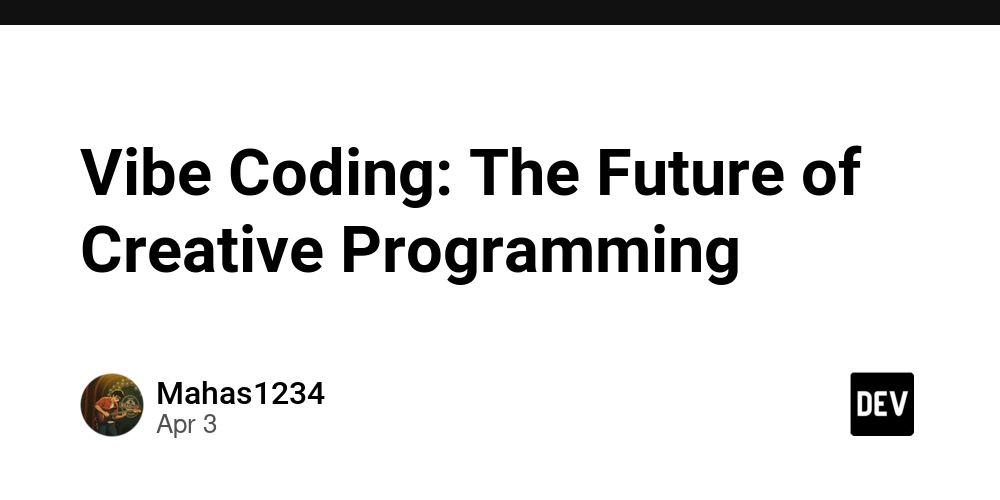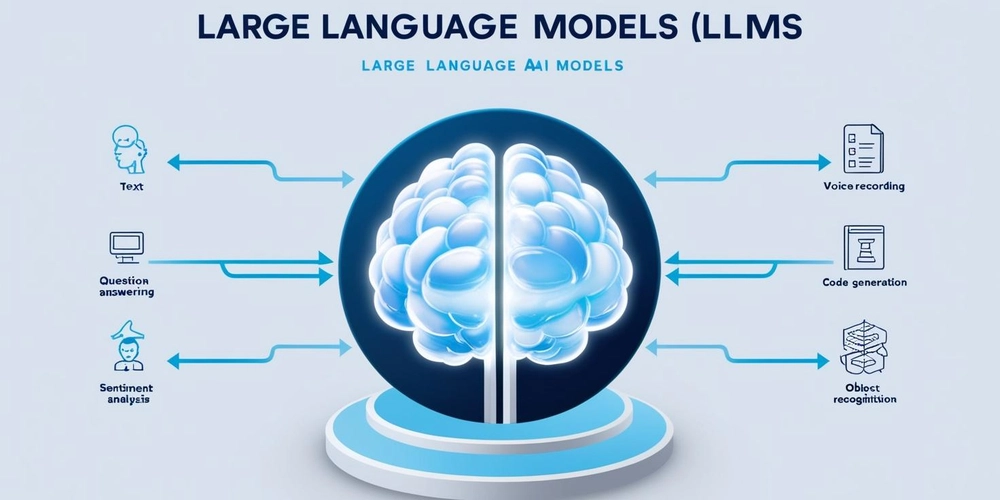Vibe Coding: The Future of Creative Programming
Introduction Vibe coding is an emerging trend that blends creative expression with programming. It moves away from traditional rigid coding styles and embraces fluid, expressive, and sometimes even experimental methods of software development. This approach is gaining traction among developers, artists, and even AI enthusiasts who seek to push the boundaries of coding beyond functional efficiency. What is Vibe Coding? Vibe coding is an informal term used to describe coding that is heavily influenced by intuition, aesthetics, and rhythm rather than strict logic and optimization. It emphasizes: Flow over structure – Prioritizing a seamless, enjoyable coding experience over strict adherence to best practices. Expressiveness – Writing code in a way that feels natural and engaging to the developer. Experimental approaches – Exploring unconventional programming techniques. Trending Topics in Vibe Coding AI-Assisted Creative Coding With the rise of AI tools like ChatGPT, GitHub Copilot, and generative AI models, coding has become more interactive and less about rote memorization. Developers are now using AI to co-create projects, brainstorm ideas, and even generate aesthetically pleasing code snippets. Popular tools include: Cursor AI – An AI-powered coding assistant that integrates seamlessly with development environments. WinSurf – A tool designed to optimize code generation and AI-assisted debugging. Trae AI – A next-gen AI-powered code generation and refactoring tool. Bolt.new – A rapid AI-powered prototyping platform for developers. LovableAI – A creative AI coding assistant focused on intuitive development workflows. No-Code & Low-Code Movements Platforms like Bubble, Webflow, and Make are revolutionizing development by enabling non-coders to create software. Vibe coding aligns with this movement by encouraging developers to focus on high-level creativity rather than syntax mastery. Live Coding & Generative Art Live coding, popular in the music and digital art communities, involves writing and modifying code in real time to generate dynamic outputs. Tools like Sonic Pi, Hydra, and P5.js have fueled this trend, making coding an expressive and performative art form. Aesthetic & Minimalist Code Developers are moving towards writing cleaner, more readable code that conveys intent intuitively. Functional programming and declarative styles (like React’s JSX and Tailwind CSS) are gaining popularity as they allow for an elegant and efficient coding style. Code as a Form of Self-Expression From using personalized aliases and emojis in terminal prompts to structuring repositories in unique ways, programmers are making coding an extension of their personal identity. Playful Programming & Gamification Gamification elements, like interactive coding challenges (LeetCode, CodeWars) and creative coding competitions (like JS13KGames), are making coding more engaging and fun. Possible Projects with Vibe Coding If you're interested in exploring vibe coding, here are some creative project ideas: Generative Art & Music: Use Processing, p5.js, or Sonic Pi to create interactive art and algorithmic music. AI-Powered Chatbots: Build a chatbot with unique personality traits using AI-driven frameworks like GPT APIs. Dynamic Visualizers: Create real-time audio-reactive visualizations using WebGL, Three.js, or Hydra. Personalized Coding Dashboards: Design a stylish and aesthetic dashboard using Python, JavaScript, or Node.js. Live Coding Performance Software: Develop a tool that allows users to code and manipulate music, visuals, or text live. Interactive Storytelling Apps: Merge creative writing and coding to develop narrative-driven interactive fiction. Experimental Web Apps: Build unconventional web experiences that focus on emotions, aesthetics, and interactivity rather than just utility. How to Get Started with Vibe Coding Experiment with AI-powered coding tools to assist in creative exploration. Explore generative art frameworks like Processing, p5.js, and TouchDesigner. Try live coding performances using Sonic Pi or Hydra. Join communities like Creative Coding Slack, GitHub Explorers, and AI-assisted development forums. Adopt a mindset of fun and flow, focusing on coding as a form of self-expression. Conclusion Vibe coding is changing how we think about software development. It encourages creativity, playfulness, and human-centric coding styles, making programming more accessible and enjoyable. Whether you're a seasoned developer or a beginner, embracing the vibe coding philosophy can enhance your coding experience and open doors to new, exciting possibilities in technology and art.

Introduction
Vibe coding is an emerging trend that blends creative expression with programming. It moves away from traditional rigid coding styles and embraces fluid, expressive, and sometimes even experimental methods of software development. This approach is gaining traction among developers, artists, and even AI enthusiasts who seek to push the boundaries of coding beyond functional efficiency.
What is Vibe Coding?
Vibe coding is an informal term used to describe coding that is heavily influenced by intuition, aesthetics, and rhythm rather than strict logic and optimization. It emphasizes:
Flow over structure – Prioritizing a seamless, enjoyable coding experience over strict adherence to best practices.
Expressiveness – Writing code in a way that feels natural and engaging to the developer.
Experimental approaches – Exploring unconventional programming techniques.
Trending Topics in Vibe Coding
- AI-Assisted Creative Coding
With the rise of AI tools like ChatGPT, GitHub Copilot, and generative AI models, coding has become more interactive and less about rote memorization. Developers are now using AI to co-create projects, brainstorm ideas, and even generate aesthetically pleasing code snippets. Popular tools include:
Cursor AI – An AI-powered coding assistant that integrates seamlessly with development environments.
WinSurf – A tool designed to optimize code generation and AI-assisted debugging.
Trae AI – A next-gen AI-powered code generation and refactoring tool.
Bolt.new – A rapid AI-powered prototyping platform for developers.
LovableAI – A creative AI coding assistant focused on intuitive development workflows.
- No-Code & Low-Code Movements
Platforms like Bubble, Webflow, and Make are revolutionizing development by enabling non-coders to create software. Vibe coding aligns with this movement by encouraging developers to focus on high-level creativity rather than syntax mastery.
- Live Coding & Generative Art
Live coding, popular in the music and digital art communities, involves writing and modifying code in real time to generate dynamic outputs. Tools like Sonic Pi, Hydra, and P5.js have fueled this trend, making coding an expressive and performative art form.
- Aesthetic & Minimalist Code
Developers are moving towards writing cleaner, more readable code that conveys intent intuitively. Functional programming and declarative styles (like React’s JSX and Tailwind CSS) are gaining popularity as they allow for an elegant and efficient coding style.
- Code as a Form of Self-Expression
From using personalized aliases and emojis in terminal prompts to structuring repositories in unique ways, programmers are making coding an extension of their personal identity.
- Playful Programming & Gamification
Gamification elements, like interactive coding challenges (LeetCode, CodeWars) and creative coding competitions (like JS13KGames), are making coding more engaging and fun.
Possible Projects with Vibe Coding
If you're interested in exploring vibe coding, here are some creative project ideas:
Generative Art & Music: Use Processing, p5.js, or Sonic Pi to create interactive art and algorithmic music.
AI-Powered Chatbots: Build a chatbot with unique personality traits using AI-driven frameworks like GPT APIs.
Dynamic Visualizers: Create real-time audio-reactive visualizations using WebGL, Three.js, or Hydra.
Personalized Coding Dashboards: Design a stylish and aesthetic dashboard using Python, JavaScript, or Node.js.
Live Coding Performance Software: Develop a tool that allows users to code and manipulate music, visuals, or text live.
Interactive Storytelling Apps: Merge creative writing and coding to develop narrative-driven interactive fiction.
Experimental Web Apps: Build unconventional web experiences that focus on emotions, aesthetics, and interactivity rather than just utility.
How to Get Started with Vibe Coding
Experiment with AI-powered coding tools to assist in creative exploration.
Explore generative art frameworks like Processing, p5.js, and TouchDesigner.
Try live coding performances using Sonic Pi or Hydra.
Join communities like Creative Coding Slack, GitHub Explorers, and AI-assisted development forums.
Adopt a mindset of fun and flow, focusing on coding as a form of self-expression.
Conclusion
Vibe coding is changing how we think about software development. It encourages creativity, playfulness, and human-centric coding styles, making programming more accessible and enjoyable. Whether you're a seasoned developer or a beginner, embracing the vibe coding philosophy can enhance your coding experience and open doors to new, exciting possibilities in technology and art.











































































































































































![[The AI Show Episode 142]: ChatGPT’s New Image Generator, Studio Ghibli Craze and Backlash, Gemini 2.5, OpenAI Academy, 4o Updates, Vibe Marketing & xAI Acquires X](https://www.marketingaiinstitute.com/hubfs/ep%20142%20cover.png)




























































































































![[DEALS] The Premium Learn to Code Certification Bundle (97% off) & Other Deals Up To 98% Off – Offers End Soon!](https://www.javacodegeeks.com/wp-content/uploads/2012/12/jcg-logo.jpg)


![From drop-out to software architect with Jason Lengstorf [Podcast #167]](https://cdn.hashnode.com/res/hashnode/image/upload/v1743796461357/f3d19cd7-e6f5-4d7c-8bfc-eb974bc8da68.png?#)








































































































.png?#)

































_Christophe_Coat_Alamy.jpg?#)
 (1).webp?#)





































































































![Apple Considers Delaying Smart Home Hub Until 2026 [Gurman]](https://www.iclarified.com/images/news/96946/96946/96946-640.jpg)
![iPhone 17 Pro Won't Feature Two-Toned Back [Gurman]](https://www.iclarified.com/images/news/96944/96944/96944-640.jpg)
![Tariffs Threaten Apple's $999 iPhone Price Point in the U.S. [Gurman]](https://www.iclarified.com/images/news/96943/96943/96943-640.jpg)




































































































































